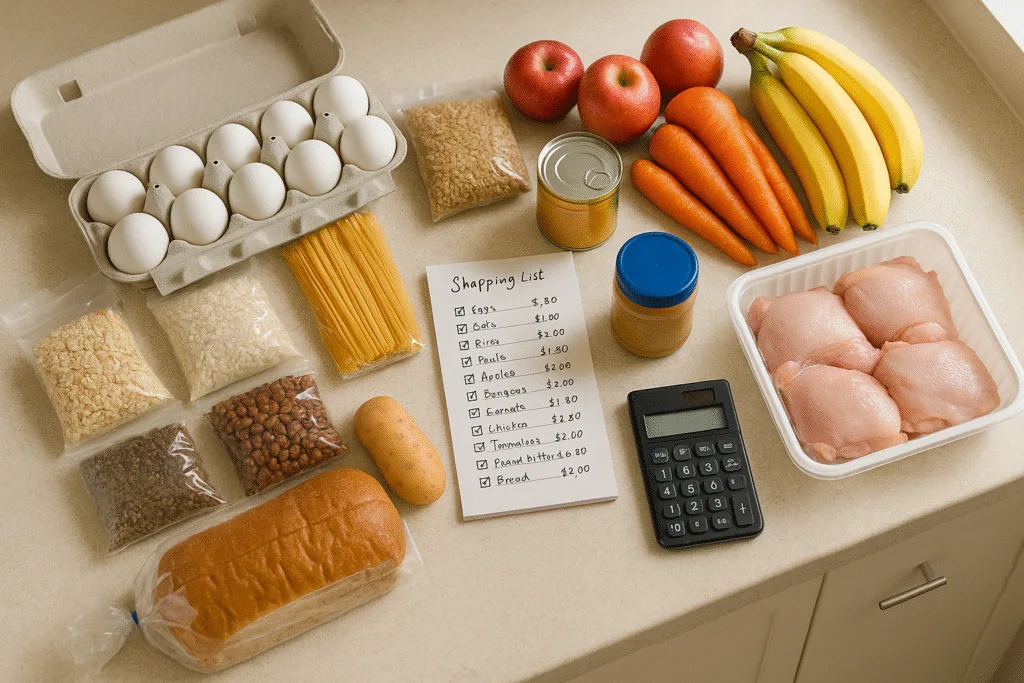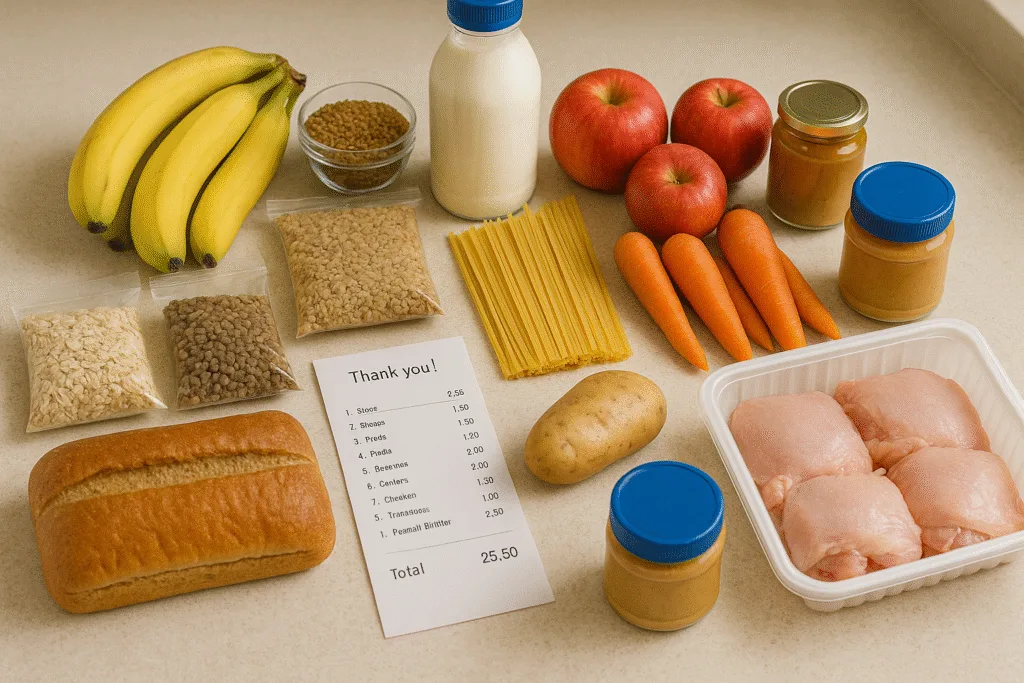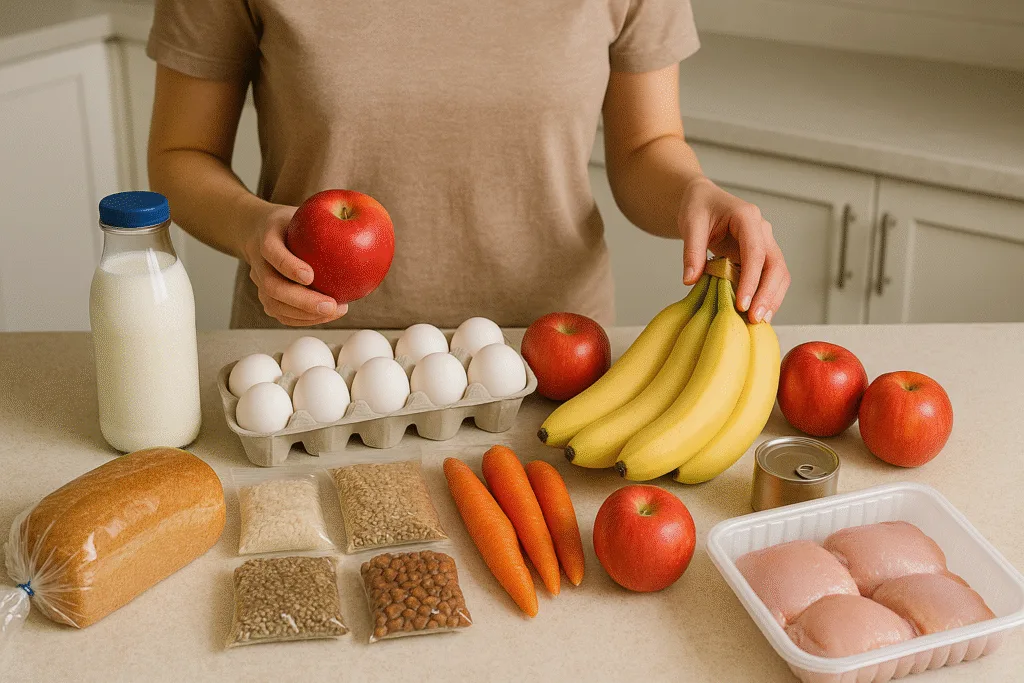Food prices have reached record highs, making grocery shopping more stressful than ever. But here is the bright side: you can fight back against a costly cart. The average household now spends about $500 a month on groceries, and that number keeps rising. Yet with a few smart habits, anyone can trim their grocery bill without sacrificing the foods you love. In fact, saving money on groceries is not about extreme couponing or living on rice and beans; it is about small, doable changes that add up each week.
I learned this firsthand. I used to stroll into the supermarket with no list, grab whatever looked good, and swipe my card in shock at a $200+ total. (Those “quick” trips for milk somehow ended with a cart full of snacks.) After one too many budget-busting checkout runs, I decided enough was enough. I started planning meals, shopping more intentionally, and saw my monthly grocery costs plunge. These are the down-to-earth strategies that worked for me, and they can work for you too.

Plan Ahead to Save Money on Groceries
Saving on groceries starts before you even set foot in the store. Take stock of what is in your pantry and fridge, then plan meals around those ingredients (so nothing goes to waste). Set a realistic grocery budget for the week and make a detailed shopping list, and stick to it. This way, you are less tempted by impulse buys. A rule of thumb: if it is not on your list, think twice. Planning ahead also means fewer “quick” trips that end up blowing your budget. When you shop with a plan and a limit in mind, you will be far less likely to overspend.

Smart Shopping Hacks to Lower Your Grocery Bill
Once you are in the store, be a savvy shopper. Compare the unit prices (the tiny numbers on shelf labels) to make sure you are getting the best bang for your buck. Often, the bigger package is cheaper per ounce, but not always, so double-check. Try switching to store brands whenever you can; you might save about 40% on those items compared to name brands, with virtually no drop in quality. Also, do not just grab the first item at eye level. Brands pay for prime shelf placement, so look on the top or bottom shelves for better deals. Finally, buy in bulk for staples you use a lot (rice, toilet paper), but skip the jumbo size if it will just go to waste.
Use Coupons and Sales Wisely (No Extreme Couponing Needed)
Sales, coupons, and reward programs can trim your grocery bill, but only if used wisely. A deal is not really a deal if it tempts you to buy things you do not need. (I learned this the hard way after ending up with 10 jars of “free” pickles I would never normally buy!) So go ahead and use your store’s loyalty card and a few coupons for items you already plan to buy, but avoid chasing every promotion. You do not need a binder full of coupons to save. For example, a digital coupon on your favorite cereal or a cash-back app for milk is effort well spent. But if a sale seduces you into extras, you are not saving at all; you are spending.
Use Everything You Buy (Stop Wasting Food)
One of the easiest ways to save on groceries is to actually eat what you purchase. Sounds obvious, but the average American family of four wastes about $1,500 worth of food per year. That is money straight in the trash. To avoid this, get serious about reducing food waste at home. Use your perishables in time: plan a “leftovers night” to finish off what is in the fridge, and store extras in the freezer before they spoil. Keep older items visible (put yesterday’s cooked chicken front and center so you remember to use it). You can also get creative with near-expiring ingredients and toss those wilting veggies into a soup or stir-fry. By squeezing every meal out of the groceries you buy, you will stretch your food budget further without buying a thing more.

Little Habits – Big Savings at the Grocery Store
Finally, pay attention to those small shopping habits that can cost you. Ever notice how you toss extra junk food in the cart when you are shopping hungry? Try to have a snack before heading out, it helps you resist those tasty but pricey impulse buys. If possible, shop solo to avoid “can we get this?” requests (kids and even spouses can unintentionally derail a budget). Another tip: use cash or set a firm spending limit. Walking in with, say, $100 in your wallet can enforce discipline in a way credit cards will not. And remember to celebrate small wins: skipping that extra bag of chips or saying no to a needless BOGO deal might only save $5 today, but over a year those little savings really add up!
External Resources
- How to Save Money on Groceries: 14 Tips to Try – NerdWallet
- 18 Ways to Save Money on Groceries – Bankrate
- 6 Ways To Save Money on Groceries – The Balance
- 7 Ways to Save Money on Groceries without Clipping Coupons – SUCCESS
Related Articles:
- How Much to Tip: A 2025 Guide to Tipping Etiquette
- Best Day to Buy Groceries: Save Money With Smart Timing
- The Best Restaurant Rewards Programs That Actually Save You Money
- Your No-Nonsense Guide to Food Delivery Value, Tipping, and Tricks That Actually Work
- Kids Eat Free Tonight: 2025 Chain List & Best Nights
Disclaimer
SaveMeMonthly.com provides general money-saving info, not financial, legal, tax, insurance, or professional advice. Offers, rates, and terms change and vary by location. Always confirm details with the provider before you buy. We may earn a commission from some links at no extra cost to you. Trademarks belong to their owners. Your choices are your responsibility.


Leave a Reply